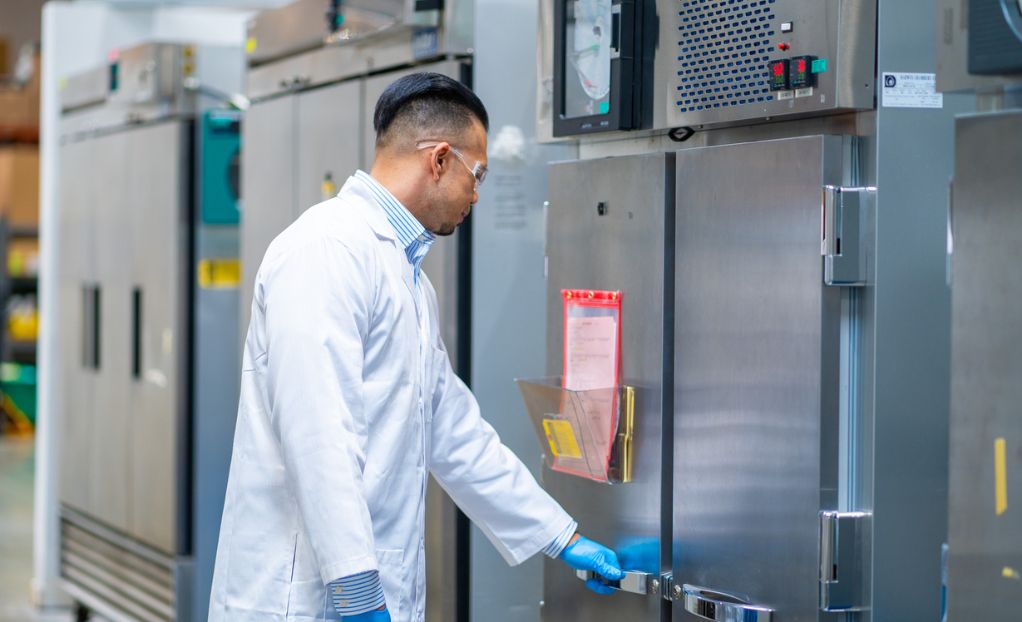The safety and efficacy of medical device products extends beyond their functionality and into the realm of packaging, which plays a pivotal role in maintaining device integrity throughout the distribution journey – protecting contents from external factors that could compromise their quality or sterile barrier. Medical package testing is necessary for development and production of these packages and can include accelerated aging or real-time aging methods.
Why is medical package testing important for medical devices?
Medical device reliability is essential for positive patient health outcomes. Device packaging acts as a shield and preserves devices from environmental factors such as temperature, humidity, and light – all of which can potentially degrade a device or its materials over time. Medical package testing ensures that the packaging meets stringent requirements to maintain a device’s quality and efficacy throughout its lifecycle.
The differences between accelerated aging and real-time aging
Within medical package testing services, there are two primary methods used to assess durability and resilience of packaging materials: These are real-time aging and accelerated aging.
Real-time aging: A longer test process
Real-time aging exposes packages to natural environmental conditions that they are likely to encounter during their anticipated shelf life. This method provides a realistic assessment of how the materials will fare over time. However, it is often a lengthy process and impractical for obtaining rapid results.
Accelerated aging: A faster test process
Accelerated aging expedites the aging process by simulating the impact of time on materials more rapidly than average conditions. It allows for quicker assessments and offers valuable insights into the long-term performance of the packaging in a shorter timeframe.
How does accelerated aging work?
Accelerated aging replicates natural effects of aging in a shorter time period by using a number of varying methods and factors, including exposure to elevated temperatures and humidity levels. Such a simulation is necessary for predicting potential package weaknesses or vulnerabilities that could compromise the integrity of the medical device or its sterile barrier.
Common factors tested during accelerated aging include:
Material integrity: Accelerated aging determines how packaging materials will hold up over time to gauge if they will remain robust and effective.
Seal strength: Medical package seals are essential to maintain sterility. Accelerated aging tests can determine the longevity and reliability of seals under accelerated conditions.
Barrier properties: Medical device packaging must provide an effective barrier against external elements. Accelerated aging tests how well the packaging materials will be able to maintain sufficient barrier properties.
Color stability: Light-sensitive components must maintain color stability within their packaging. Accelerated aging can predict if any discoloration could potentially occur over time.
The accelerated aging process serves as a valuable tool for manufacturers. It enables them to identify possible issues early in the development phase and make informed decisions to enhance the longevity and reliability of their medical device packaging. Life Science Outsourcing offers both real-time aging and accelerated aging stability testing, along with a useful (and free!) accelerated aging calculator to help guide clients with their next project.
The guiding standards for accelerated aging: ASTM F1980
Adhering to standardized procedures is essential to guarantee consistency and reliability in medical device packaging outcomes. The American Society for Testing and Materials (ASTM) established a guide for this reason. ASTM F1980 is the standard guide for accelerated aging of sterile barrier systems and medical devices that all packaging service providers should follow.
It provides a comprehensive framework for conducting accelerated aging tests, including the selection of appropriate aging conditions and interpretation of test results. Adhering to ASTM F1980 ensures that testing processes are uniform across the industry and allows manufacturers to compare results effectively and make informed decisions about packaging material viability.
Package testing safeguards medical device quality
Technology continues to advance – and demand for innovative medical devices will continue to grow. Robust and reliable packaging will be increasingly important to protect them throughout their distribution and storage process. Package testing methods such as accelerated aging can empower manufacturers to predict the long-term performance of their packaging materials and ensure safety for the end user. And due to its ability to perform testing in an expedited manner, it also allows manufacturers to deliver their product to market much faster, ultimately contributing to improved healthcare outcomes.
Looking for more information on medical device manufacturing? Read Unveiling the Vital Role of the Sterile Barrier in Medical Device Packaging.
Start up. Speed up. Scale up. Founded in 1997, Life Sciences Outsourcing is an FDA-registered and ISO 13485-certified organization with services and capabilities spanning the entire medical device product life-cycle – from turnkey manufacturing, testing, validation, and sterilization to precision packaging, fulfillment, and distribution. Email us at info@lso-inc.com or call (714) 672-1090 today to get started.





